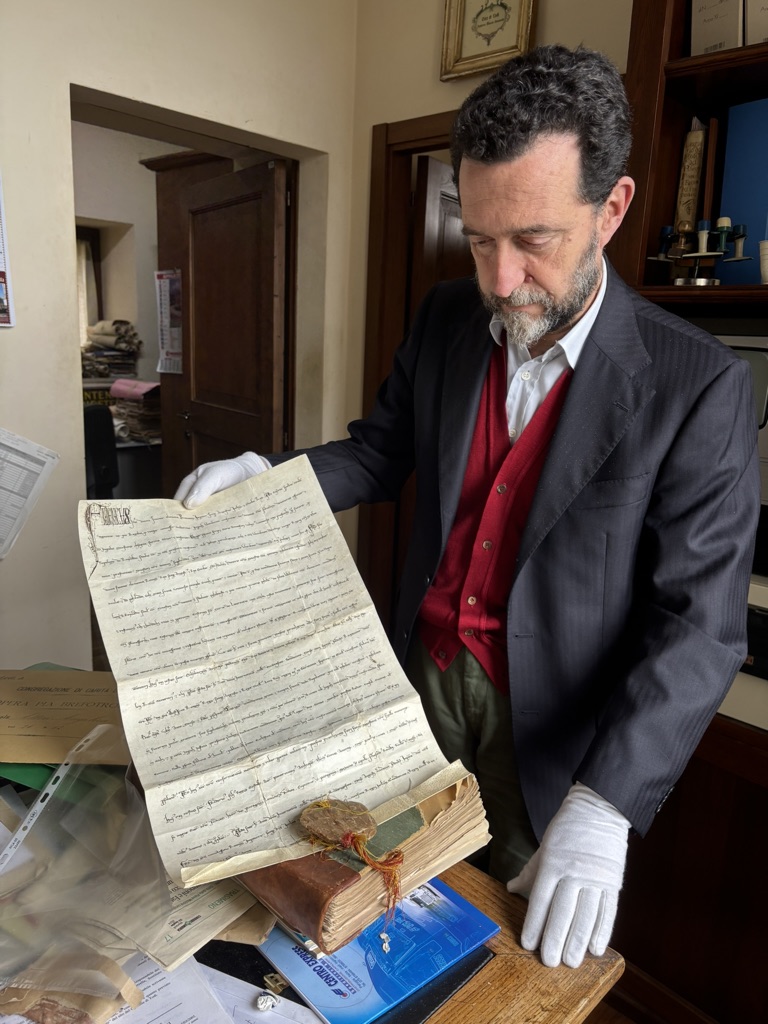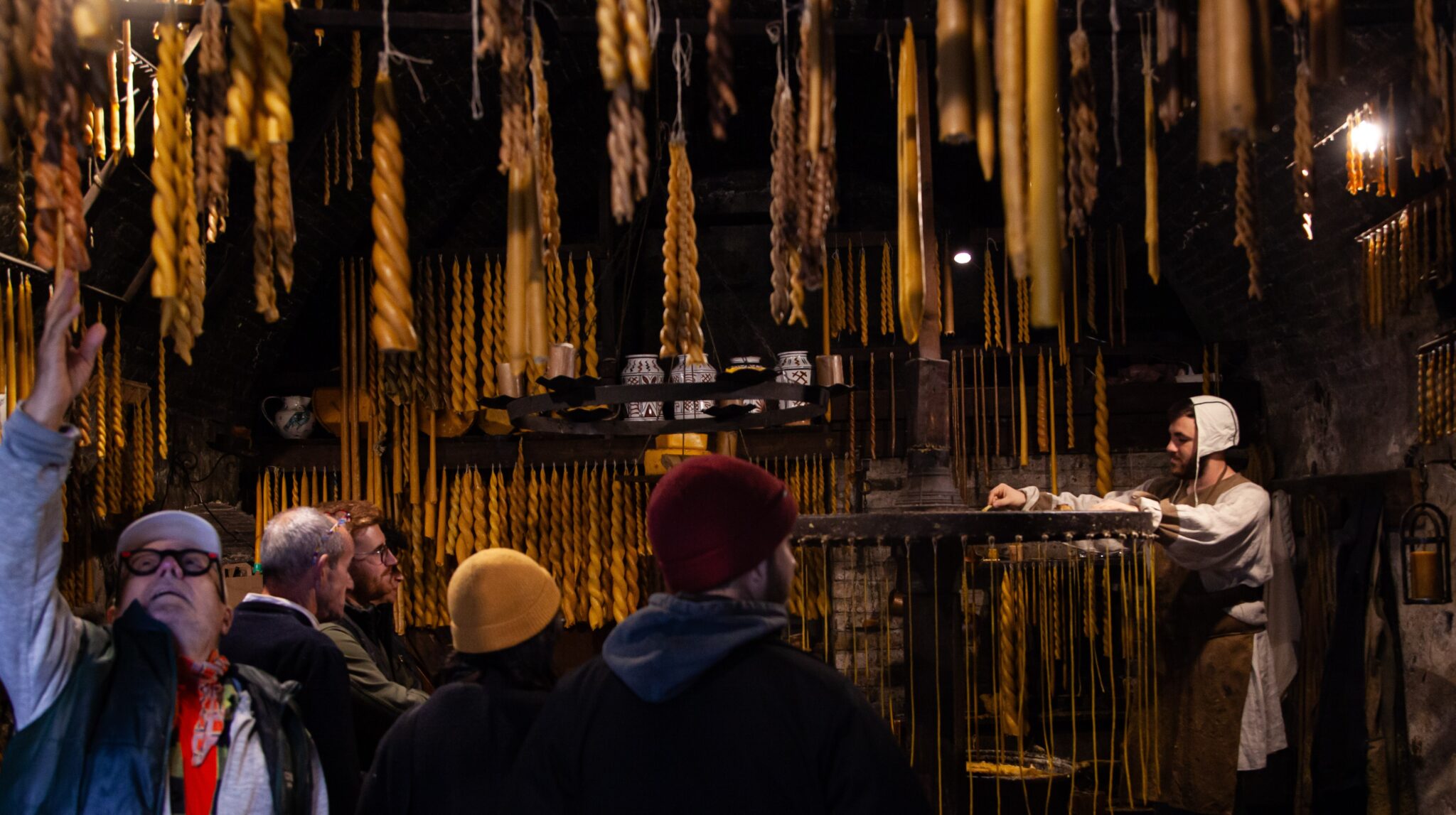The Historical Archives of the Municipality of Todi are hidden behind the church of San Fortunato, a quiet and secluded corner that occupies the rooms of the ancient monastery.
I went there to see an object that intrigued me and I was surprised by the richness of the contents of the Archives. I was welcomed by the director, Dr. Filippo Maria Orsini, who explained the contents of the Archives to me. In the rooms of the former monastery are collected eight centuries of documents relating to the city of Todi that go from 1200 to 1970. Among the important documents are the acts of submission to Todi of the cities of Amelia and Terni, some papal bulls of Pope Boniface VIII and the acts of the trial of the witch Matteuccia that date back to 1428.
Among the papers that aroused my interest is the signal letter regarding Giuseppe Mazzini: it is dated January 17, 1851 and alerted the papal police that Mazzini could pass through Todi. At that time he was wanted by all the Italian states for his revolutionary activities and in particular by Pope Pius IX because of the failed Roman Republic, which had forced the Pope to flee to Gaeta. The signal letter describes Mazzini as a tall man with a beard, exactly as we have seen him in all the portraits of the time and in school books.

But the document that fascinated me the most was the seal of Frederick II of Swabia, which Dr. Orsini showed me, but did not touch. On May 13, 1240, Emperor Frederick II of Swabia, stupor mundi, was in Umbria and had stopped in Perugia, Spoleto, Montefalco, and Todi; on this occasion he granted the fief of Santa Maria de Laurenzio, or Bevagna, to Napoleon Rinaldo of the counts of Antignano and Coccorone. The emperor had stayed for some time in the town of Coccorone, which later changed its name to Montefalco, probably linked to the emperor’s falcons. Frederick II of Swabia was the son of the Holy Roman Emperor Henry VI of Swabia and Constance of Hauteville, was King of Jerusalem, King of Sicily, and Emperor of the Holy Roman Empire. He went down in history for the role he played between the papacy and the empire, but in particular, because he cultivated and stimulated culture and science.
The granting of the fiefdom is written on parchment and bears the signature of the Emperor and the authenticity of the document is guaranteed by the imperial seal; a seal that could not be made of ordinary sealing wax, but of a much more precious material, beeswax. The dimensions are also considerable, it is almost square and measures 8 cm x 8 cm and is about 2 cm high. On the upper face is imprinted the image of Frederick II on the throne who with his right hand holds the sceptre and with his left hand the globe that indicates his power. A beeswax seal of those dimensions in the 12th century cost an enormous amount and was reserved for emperors and popes.
A precious material
At that time, wax was also used as a currency, it was used to print votive offerings and was essential for preparing Easter candles as required by the Holy Roman Church. Other candles were made with various types of sheep or cow fat, they cost little and stank a lot, whereas the fine candles and candles were made with scented beeswax. The candles and candles were made by attaching the wicks to a wheel that turned slowly and at each turn the hot wax was poured along the wick, so the candle was made in overlapping layers and the larger and thicker the candle, the higher the cost. To see how these candles were made, just go to Bevagna during the Gaite festival at the end of June.

The archive documents were told to me by Dr. Orsini, who allowed me to see them. Seeing these documents has a historical interest, but it is also an emotion, because the stories in history books become current and the characters emerge as if we had them in front of us with everyday life and problems.
Renata Covi
Latest posts by Renata Covi (see all)
- The seal of Frederick II of Swabia - June 5, 2025
- Tale of Cannara at the end of the 19th century: wine, onions and a woman in the pharmacy - April 15, 2025
- Romea Germanica: the ancient pilgrimage route, today it can be retraced on foot or by bike - December 12, 2024

